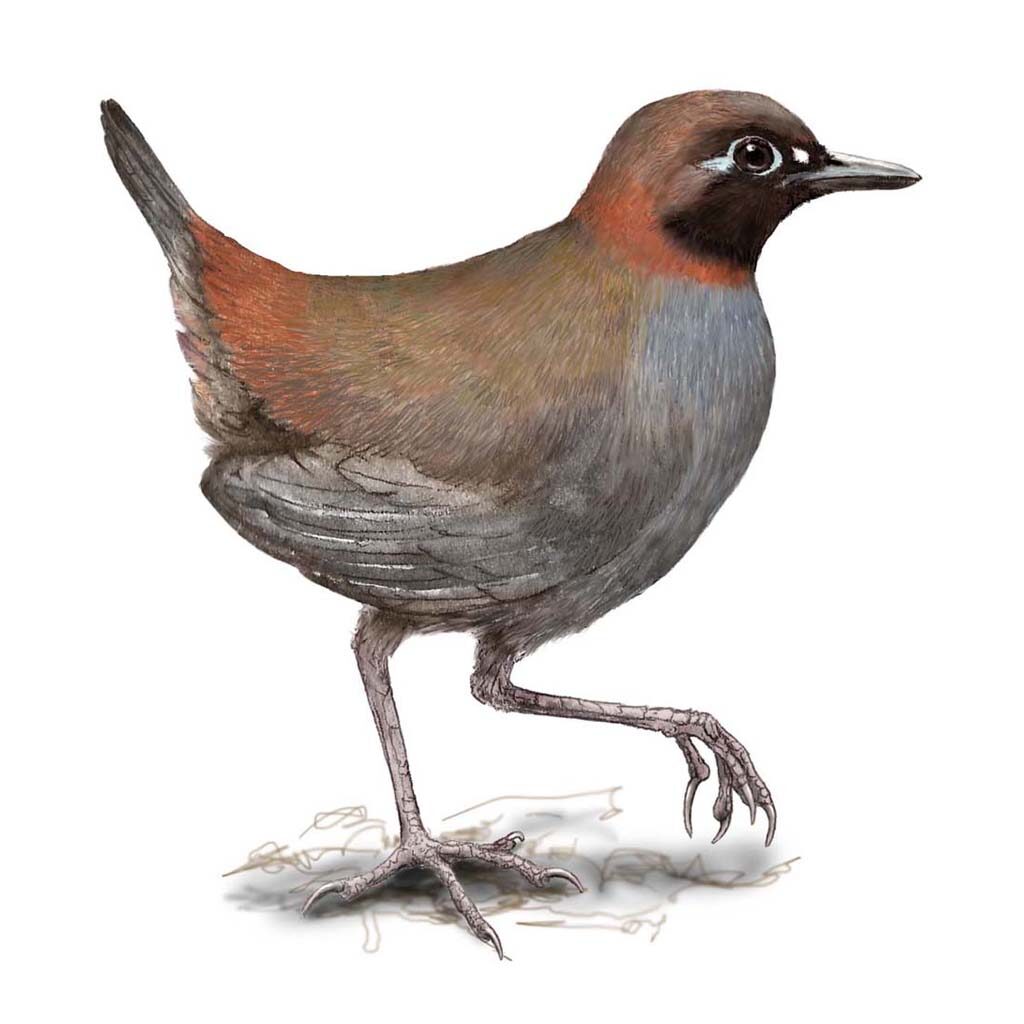Black-faced Antthrush

“TUH! tu-tu-tu-tu-tututututu” —- “TUH! tu-tu-tu-tu-tututututu” —- “TUH! tu-tu-tu-tu-tututututu”
This is a call often heard in Belizean rain forests at dawn and dusk, and sometimes during the day. It’s the repeated call of the black-faced antthrush, and its clear tones are a lovely way to wake up in the morning.
Belize is at the northern end of its range, which extends south to Bolivia. But although its call is iconic and the black-faced antthrush ranges from “fairly common” to “common” in humid forests throughout Belize, this shy bird is seldom seen.
If you happen to see one, this little bird, a bit smaller than a robin, is unmistakable. Plump and perky on long pinkish legs, it darts across the forest floor with a jerky gait, tossing leaves to look for insects, snails, spiders and other invertebrates, and rarely a small snake, lizard, frog or fallen fruit, with its tiny tail cocked upward and flicking like a wren’s.
Besides its shy, retiring nature, another reason this bird is hard to spot is that it blends into shadows with its brown upper parts and gray underparts, with a few cinnamon accents. However, it has a very distinctive black face and throat, and a powder blue eye-ring. Here’s a great little video showing its activity. Check it out here. Notice the flicking tail.
Birder watchers consider spotting this bird a nice coup, watching for black-faced antthrushes following army ant columns, as this is a favored food. My “coup” wasn’t so great. One day I left one of my front-seat car windows open but the other one closed, and one of these lovely little birds tried to fly through. I found it dead on the car seat with a broken neck. Lesson learned – now I keep my car windows closed.